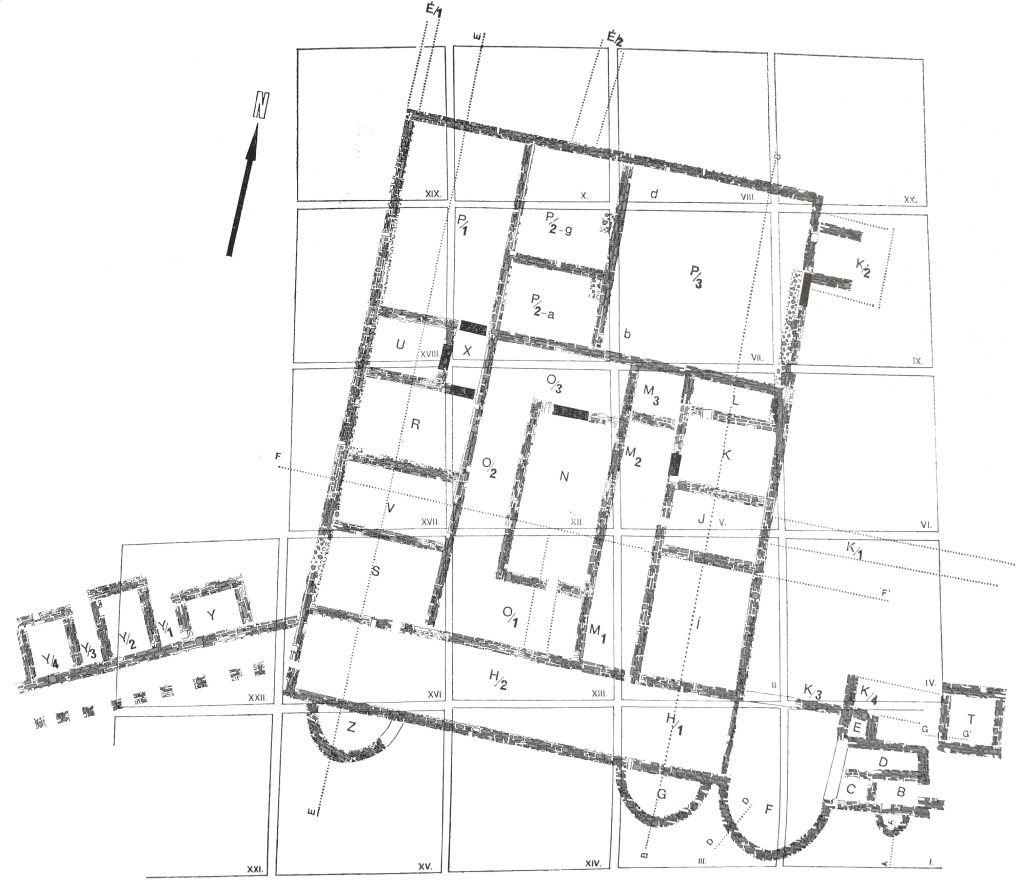
Kővágószőlős
- Roman Province: Pannonia Inferior
- Modern: Hungary
- Topography: low-lying plain
- Date: mid 2nd – mid 4th century
- Architectural plan: peristyle style with bath house and mausoleum

Alice Burger excavated the site between 1977 and 1983. The villa is located 12km west of the town of Pécs, oriented north-south, with a stream to the west. The building was of the peristyle type, with a portico surrounding a central courtyard paved with flat stone slabs. It meets the Vitruvian requirements in terms of the choice of location, orientation, and the layout.
Hosszúhetény
- Roman Province: Pannonia Inferior
- Modern: Hungary
- Topography: low-lying plain
- Date: 2nd – 4th century
- Architectural plan: peristyle style with apsidal ending

János Dombay excavated the area in 1940, the remains were not reburied and the results were not published. The main building has two frontal hexagonal rooms and also a separate bath-house. The interior rooms were decorated with wall-paintings. Recultivation was carried out on the site in 2018 and 2023, during which it was confirmed that the villa had a roofed façade between the two front rooms.
Komló-Mecsekjánosi
- Roman Province: Pannonia Inferior
- Modern: Hungary
- Topography: low-lying plain
- Date: 3rd – 4th century
- Architectural plan: peristyle style with apsidal ending

The site was excavated by Alice Burger in 1958-1959, and the archaeological fragment can be found in the Janus Pannonius Museum. The villa was built probably around the 2nd-3rd century and it may have undergone several periods of rebuilding, with the last period of use dating back to the second half of the 4th century. The number of artifacts is very poor, giving the impression that the building was completely emptied or looted before it burnt down.
